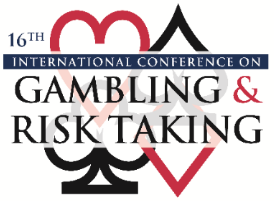Players’ Money Management in Gambling and Free-to-Play Gaming
Session Title
Session 1-3-B: Gambling Behaviors
Presentation Type
Event
Location
The Mirage Hotel & Casino, Las Vegas, Nevada
Start Date
7-6-2016 2:00 PM
End Date
7-6-2016 3:30 PM
Disciplines
Communication Technology and New Media | Critical and Cultural Studies | Social Media | Sociology
Abstract
New monetization models have been integrated with digital gaming in recent years. Players can often buy new content to a game after the initial purchase. Popularity of free-to-play games has also increased recently. In free-to-play games, players can start to play without any payment, but the game design urges players to spend money during playing. In this respect, free-to-play gaming and gambling bears resemblance to each other. There is no pre-set maximum limit, how much money players can consume during playing. Some players have spent more money on free-to-play games than average gamblers spend on gambling. In both game genres, usage of money influences game experiences and gaming influences perception of money before, during and after playing.
In this paper, we analyze qualitative interview data of 15 gamblers and free-to-play gamers. The focus is on how players experience and manage money before, during and after gambling and free-to-play gaming. The meaning of money for players changes from one situation to another. For example, it is common for gamblers to separate gambling money from other forms money, such as housekeeping money. The separation of money into different currencies requires intentional reflection from gamblers. Classification of money is not that explicit for free-to-play gamers, who regard playing money similar to money used in other hobbies or recreational activities. As convergence of gambling and other forms of gaming continues, gamblers’ money management strategies can become relevant also for free-to-play gamers.
Keywords
Online gambling, Free-to-play games, Player experiences, Social meaning of money
Streaming Media
Players’ Money Management in Gambling and Free-to-Play Gaming
The Mirage Hotel & Casino, Las Vegas, Nevada
New monetization models have been integrated with digital gaming in recent years. Players can often buy new content to a game after the initial purchase. Popularity of free-to-play games has also increased recently. In free-to-play games, players can start to play without any payment, but the game design urges players to spend money during playing. In this respect, free-to-play gaming and gambling bears resemblance to each other. There is no pre-set maximum limit, how much money players can consume during playing. Some players have spent more money on free-to-play games than average gamblers spend on gambling. In both game genres, usage of money influences game experiences and gaming influences perception of money before, during and after playing.
In this paper, we analyze qualitative interview data of 15 gamblers and free-to-play gamers. The focus is on how players experience and manage money before, during and after gambling and free-to-play gaming. The meaning of money for players changes from one situation to another. For example, it is common for gamblers to separate gambling money from other forms money, such as housekeeping money. The separation of money into different currencies requires intentional reflection from gamblers. Classification of money is not that explicit for free-to-play gamers, who regard playing money similar to money used in other hobbies or recreational activities. As convergence of gambling and other forms of gaming continues, gamblers’ money management strategies can become relevant also for free-to-play gamers.

Comments
Audio recording of this presentation is attached as a downloadable MP3 audio file, 47.3 MB.
This presentation starts at 26:08.